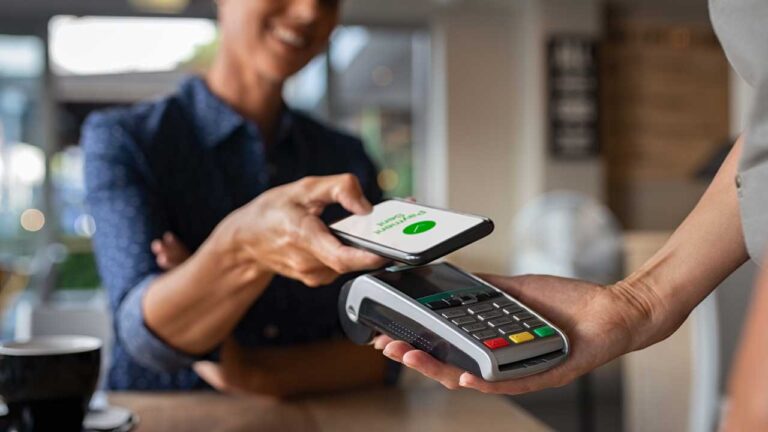Chargeback Prevention Guide: 13 Proven Ways to Prevent Chargebacks

Chargebacks are a major hassle and risk for merchants. Besides losing revenue from a transaction, merchants will also have to pay chargeback fees. Worse yet, a rising chargeback ratio could result in increased processing costs for every transaction ( including those that don’t produce chargebacks). This can raise the cost of doing business, which in turn could be an existential threat. The good news is that there are many steps you can take to prevent and reduce chargebacks. The right approach to preventing chargebacks can save businesses time, money, labor, and other resources. We’ve outlined some key tips below, but if you have questions or need assistance, feel free to reach out to the ChargebackHelp team.
1. Use Clear Billing Descriptors
The chargeback process often kicks off when a cardholder is reviewing their account or financial statements, looking for suspicious activity and otherwise monitoring their spending. If an unfamiliar charge comes up, the cardholder may immediately think that they have been the victim of fraud. Often, however, transactions aren’t actually fraudulent, but the customer simply forgot about the purchase or the merchant used unclear billing descriptors that confused the cardholder.
Let’s say an entrepreneur, John Jack Doe, sells shoes via an online store called Amazing Acme Shoes. However, the merchant website is set up under a holding company called John Jack Doe Holdings. When purchases show up on a cardholder’s statement, payments are made to John Jack Doe Holdings, not Amazing Acme Shoes. The customer probably isn’t going to recognize John Jack Doe, and thus may file a chargeback, thinking they were defrauded even though the transaction was legitimate. If the charge had come from Amazing Acme Shoes, however, the transaction is more immediately recognizable.
Unfortunately, vague transaction descriptors are one of the most common sources of chargebacks. Yet this also means that clarifying billing descriptors offers a relatively easy way to prevent many chargebacks. When it comes to transactions, you want to use a brand customers will quickly recognize. It’s also smart to provide clear details about what was purchased. Instead of a $15 charge for “lunch,” for example, a restaurant should offer precise descriptors, such as “BLT lunch combo.” Ultimately, you want to make sure that cardholders will quickly recognize the transaction.
2. Use Chargeback Alerts
Another way to prevent chargebacks is to use chargeback alerts. These alerts can be especially useful for chargebacks stemming from confusion and misunderstandings, like vague billing descriptors. A chargeback alert is a notification sent to a merchant before a chargeback is officially filed. The alert will give the merchant time to resolve the issue before a chargeback becomes a black mark on their record. This may simply mean clearing up billing descriptors or otherwise jogging the cardholder’s memory.
Often, however, resolving a conflict means offering a refund. While merchants may not want to lose revenue, if they get hit with a chargeback, they could still lose the revenue from the transaction, and will also have to pay chargeback fees. Further, the merchant’s chargeback ratio will rise, and if it gets too high, the merchant may end up having to pay increased fees and processing costs. Given the stakes, offering a refund is frequently the better course.
3. Have a Responsive Customer Service Department
Some cardholders will turn to their bank first if a transaction sets off red flags or if there is a problem with an order. However, many cardholders will first reach out to the merchant. A customer might wonder where a shipment is or might need clarifications regarding a transaction they don’t recognize.
Should a customer contact you and you reply promptly, you may head off a chargeback. A responsive customer service department will quickly and clearly communicate with the cardholder to resolve issues. If the cardholder doesn’t get a timely and satisfactory response from the merchant, however, he or she may simply turn to their bank.
4. Set Up an Easy-to-Use Return Policy
Besides communicating quickly with customers, it’s also smart to offer a simple and low-cost return process. When merchants erect hoops for customers to jump through or charge customers hefty fees (such as a restocking fee), the cardholder may simply turn to their bank. With a chargeback, the customer can get all of their money back.
If a customer is unhappy with a product or service, the best course of action is often to simply offer a refund. While a merchant may not want to lose revenue via refunds, the alternative -chargebacks- is much worse. As such, merchants should typically set up an easy and free (or low-cost) return process.
5. Set Proper Customer Expectations
One way to reduce both chargebacks and returns is to set clear expectations from the get-go. When taking product photos, it’s relatively easy to make specific products look amazing with the right lighting, angles, etc. However, if the photos do too good of a job and make the product look significantly better than it is in real life, customers will be more likely to be dissatisfied with their purchase.
Buyer’s remorse is a major issue for merchants and overstating the quality, functionality, or other attributes can add fuel to the fire. It’s okay to show products off in a good light, just make sure you don’t take it to the point that the customer feels they were misled. The same is true when writing product descriptions or putting marketing and ad campaigns together. Be confident in your product's strengths, yes, but make sure to set appropriate expectations.
6. Provide Shipment Tracking
Another way to reduce confusion and thus potentially chargebacks is to provide shipment tracking info. This way, the customer can see where their order is and when it’s likely to arrive. Delayed shipments are a fact of life. However, customers may think that a delayed shipment was never shipped or got lost. And if a customer is worried that their order will never arrive, they may ask their bank for a chargeback. With tracking info, customers can monitor their purchase and know that it’s not lost, thus reducing the risks of them turning to their bank.
7. Require Signed Shipping Receipts
Unfortunately, thieves have realized that dropped-off packages make for ripe targets. Rather than breaking into a house to steal something, the criminal can simply pick up a box off the porch. Further, cardholders can commit fraud by claiming that a delivered order never arrived and then filing a chargeback. If their chargeback is approved, the cardholder will get their money back while also keeping the product they ordered.
With signed shipping receipts, you can prove that the order was handed off to an authorized person. Signed shipping receipts are an especially good idea if the goods being delivered are expensive. A merchant might not require a signature for a $5 pair of socks. However, if the order is for a $500 handbag, it’s a good idea to require signatures.
8. Gather Evidence of Identification
Besides signatures, there are other steps you can take to pin down someone’s identity. For example, you can track IP addresses, which identify specific devices connected to the Internet. If a customer claims that they never made a purchase, but the IP address corresponds with the cardholder, you may have evidence to prove otherwise.
Further, a merchant may notice that an IP address is generating a lot of complaints and chargebacks. In this case, fraudsters operating from a specific IP address may be targeting the merchant. Going forward, a merchant could block or pause transactions from the relevant IP address. Various other bits of data can also be gathered to help elucidate transactions. You can use Address Verification Services (AVS) to check billing addresses, for example. The more data you can capture, the better.
9. Get Card Verification Values
It’s crucial for online merchants to get Card Verification Values (CVV). A CVV is a three or four-digit series of numbers found on physical credit cards. Often, the number is on the back of the card, although sometimes you’ll find it on the front. CVVs are crucial for Card Not Present transactions, which include most online transactions. In these cases, the card is not physically presented to the merchant. Instead, the customer plugs the credit card number and other details into a form.
CVVs are important because they act as a second way to authenticate the cardholder. Criminals might break into a database and steal a customer’s credit card numbers. However, if they don’t have the CVV, they’ll struggle to make online purchases with the card number alone. If a merchant doesn’t obtain the CVV when completing a transaction and a chargeback is filed, they’ll most likely lose the dispute.
10. Send Order Confirmation Emails
Whenever a transaction proceeds, you should send confirmation emails. First, sending a confirmation email will create a paper trail (including a digital paper trail) that may later prove useful if a dispute emerges. Second, if a transaction wasn’t actually authorized by the cardholder, the confirmation email will alert them. It’s possible their credit card or online account was stolen and misused by criminals.
If a cardholder contacts the merchant and cancels the transaction before the goods are shipped, it could prevent a fraudulent transaction from going forward. Not only could this head off a chargeback, but the merchant can protect their inventory by stopping a shipment before it goes out the door.
11. Use Two-Factor Identification
Rather than stealing credit cards, criminals may try to take over a user’s account with online merchants or other relevant parties. Then, the fraudster can use saved payment credentials to make unauthorized purchases. Account takeover fraud is very common, with Spy Cloud reporting that more than 20% of adults have suffered account takeover fraud.
With two-factor identification, you can require users to provide two or more proofs of identity. For example, you may ask a user to not only provide a password to log in but also ask that they click on a link in an email sent to their email address on file. This means the individual trying to log in will need to have access to the email. If a fraudster steals a user’s login information to a merchant website but doesn’t have access to the email on file, they won’t be able to log in.
3D Secure can also be used to authenticate users. With 3D Secure, the card issuer will ask the person trying to use the card to log into a portal using a password, PIN, or other credential.
12. Build a Strong Company Culture
As you can see, there are a lot of steps merchants can take to reduce chargebacks. While the tips provided above rank among the most effective ways to prevent and reduce chargebacks, there are still other steps you can take. In order to find success, however, you’ll need to build a company culture that emphasizes reducing chargebacks and preventing fraud.
You can set up the best protocols and subscribe to the best chargeback management tools available, but if your staff doesn’t prioritize combating chargebacks and fraud, you’re likely to get hit with a lot of chargebacks anyway. Ultimately, the human factor is crucial and staff will need to be trained and encouraged to prevent chargebacks and other issues.
13. Use Chargeback Management Tools
There are a lot of tools and strategies you can use to combat chargebacks. If you put everything to good use, you may see dramatically fewer chargebacks and less fraudulent activity. Yet managing the various tools can be difficult. Take chargeback alerts, for example. There are several services you can use and many merchants leverage two or more. However, logging into different platforms and learning how to use all of them can be difficult and time-consuming.
Gathering evidence and data, like CVVs and IP addresses, can also be quite a hassle. Sharing that data with relevant parties can be a major hassle too. ChargebackHelp offers various tools that make combating and managing chargebacks easier, including tools that can automatically gather and share data. Further, instead of logging into multiple portals, to manage multiple chargeback alerts for example, you can manage them all from one easy-to-use dashboard.
While you can’t prevent every chargeback, you can still combat them. When it comes time to fight chargebacks through the rebuttal process, you’ll have to gather a lot of data and documentation while also managing tight timetables. A chargeback management platform like ChargebackHelp can streamline the entire process and help you track important deadlines too.
The right tools make it easier to build a strong chargeback prevention and anti-fraud company culture. You can resolve disputes more easily and more quickly, saving labor power and other resources. The best solutions can help you maintain lower payment processing costs as well. With the best chargeback management tools and a sound approach for managing and preventing chargebacks, you can hone a competitive edge and put your company in position for further success.







